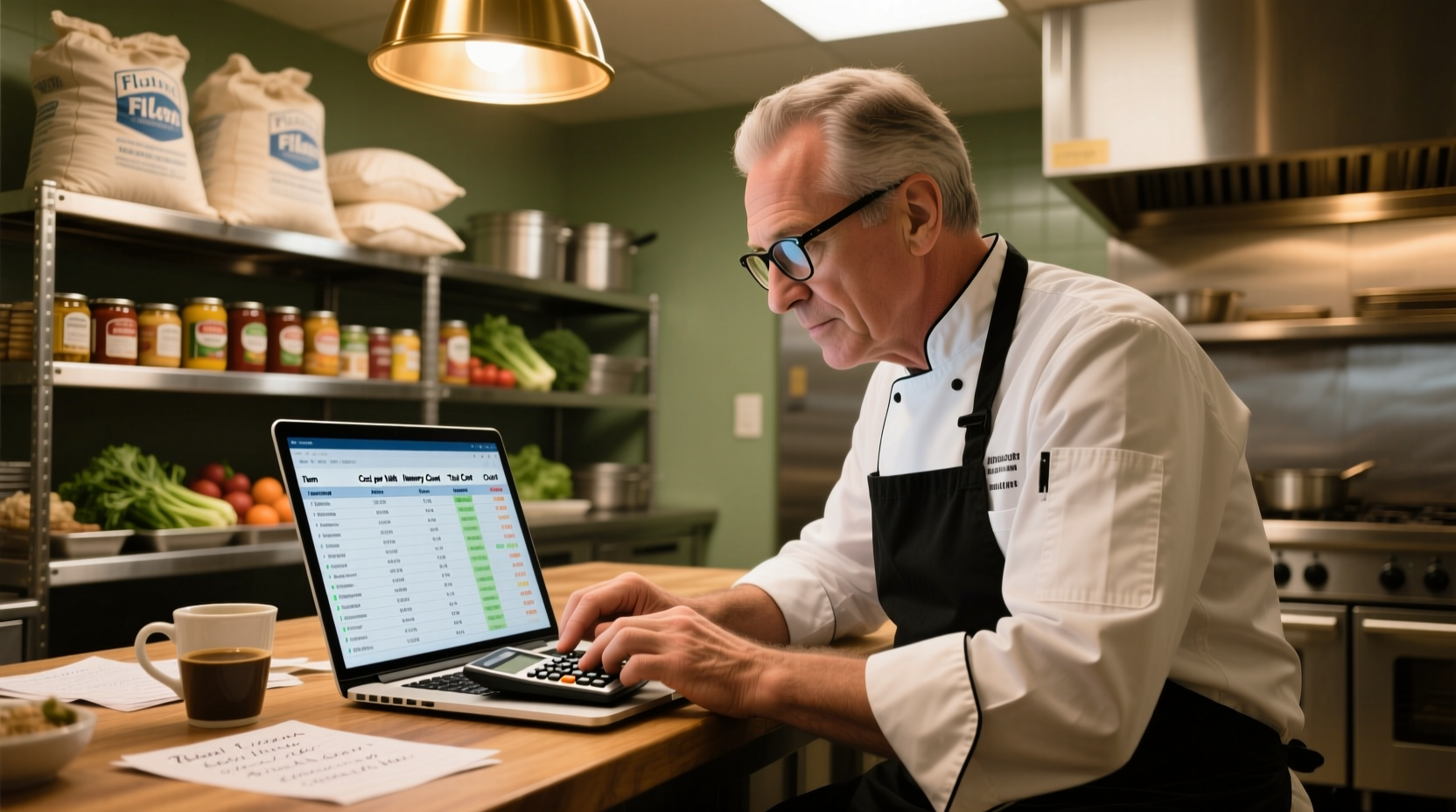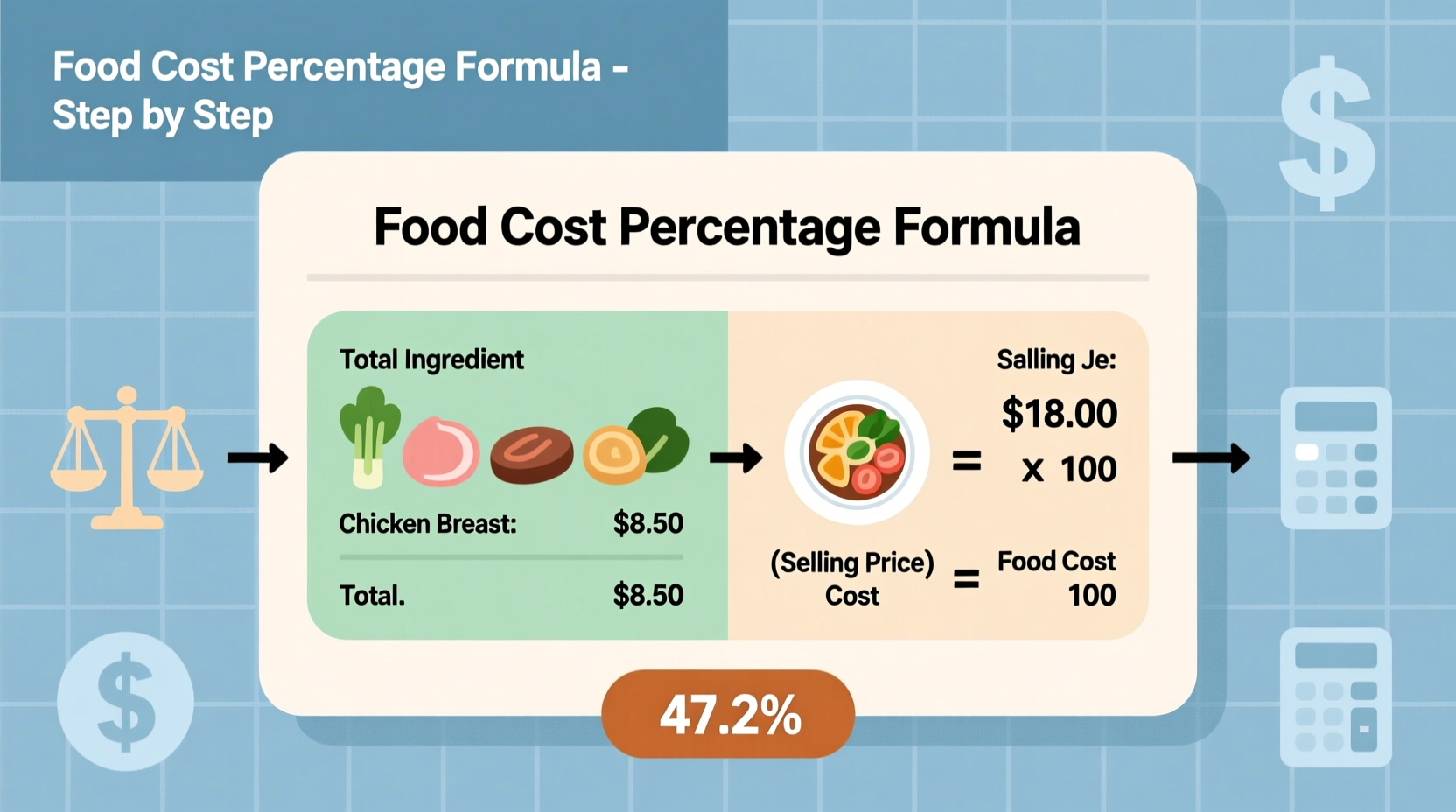Food cost percentage = (Total food cost ÷ Total food sales) × 100. The ideal range for most restaurants is 28-35%, though this varies by concept. This calculation helps restaurant owners monitor profitability and identify areas for improvement in inventory management and menu pricing.
Understanding your food cost percentage is the cornerstone of restaurant profitability. Whether you're opening your first cafe or managing a multi-unit operation, this metric reveals how efficiently you're converting food purchases into revenue. Get it right, and you'll have the data needed to make informed decisions about menu engineering, portion control, and supplier negotiations.
Why Food Cost Percentage Matters for Your Business
Food cost percentage represents the relationship between what you spend on ingredients and what you earn from food sales. Unlike absolute dollar amounts, this percentage metric allows for meaningful comparisons across different time periods and restaurant concepts. When industry experts recommend maintaining food costs between 28-35%, they're referencing data collected from thousands of successful operations through the National Restaurant Association.
| Restaurant Type | Typical Food Cost Range | Key Factors Influencing Costs |
|---|---|---|
| Full-Service Restaurants | 28-32% | Higher labor costs offset food costs; table service allows for premium pricing |
| Quick Service Restaurants | 25-30% | Standardized portions; high volume compensates for lower margins |
| Fast Casual | 30-35% | Higher quality ingredients command premium pricing |
| Food Trucks | 20-28% | Lower overhead allows for more competitive food pricing |
This comparison shows why blindly targeting a specific percentage without considering your business model leads to poor decisions. Fine dining establishments can operate profitably with higher food costs because their premium pricing strategy generates greater overall margins.
The Step-by-Step Food Cost Calculation Process
Accurate food cost percentage requires precise data collection. Here's how to calculate it properly:
- Track beginning inventory: Document all food inventory value at the start of your period (Monday morning before service)
- Record purchases: Track all food purchases during the period (keep receipts and categorize)
- Document ending inventory: Count and value all remaining inventory at period end (Sunday night after closing)
- Calculate total food cost: Beginning inventory + Purchases - Ending inventory
- Determine food sales: Total revenue from food (excluding beverages and taxes)
- Apply the formula: (Total food cost ÷ Total food sales) × 100 = Food cost percentage
This systematic approach prevents the common mistake of simply dividing weekly purchases by weekly sales, which ignores inventory fluctuations and leads to inaccurate calculations.
Real-World Calculation Example
Let's walk through a practical example for a hypothetical 100-seat American bistro:
- Beginning inventory (Monday): $8,500
- Weekly food purchases: $12,300
- Ending inventory (Sunday): $7,200
- Weekly food sales: $38,500
First, calculate total food cost: $8,500 + $12,300 - $7,200 = $13,600
Then apply the formula: ($13,600 ÷ $38,500) × 100 = 35.3% food cost percentage
At 35.3%, this bistro is operating at the higher end of the acceptable range for full-service restaurants. The owner should investigate potential issues like portion creep, waste, or theft before adjusting menu prices.

Avoiding Common Food Cost Calculation Mistakes
Many restaurant operators unknowingly miscalculate their food costs. Here are the most frequent errors and how to avoid them:
Mistake #1: Including Beverage Costs
Alcohol has dramatically different cost structures than food. Always calculate beverage costs separately using the same formula. Combining them creates misleading data that prevents targeted improvements.
Mistake #2: Ignoring Waste and Theft
Food that spoils, gets tossed, or disappears through theft still counts as cost. Implement portion control systems and regular inventory audits to identify these hidden expenses. According to Culinary Institute of America research, restaurants typically lose 8-10% of food to preventable waste.
Mistake #3: Using Inconsistent Time Periods
Match your inventory counts to your sales reporting periods. If you take inventory weekly but your POS reports sales monthly, your calculations will be inaccurate. Most successful restaurants track food costs weekly to catch issues early.
Strategies to Optimize Your Food Cost Percentage
Once you've established accurate baseline measurements, implement these proven strategies:
Menu Engineering Analysis
Identify your most profitable items using contribution margin analysis. The National Restaurant & Hospitality Association reports that 20% of menu items typically generate 80% of profits. Highlight these stars while reconsidering underperformers.
Supplier Negotiation Tactics
Armed with accurate cost data, approach suppliers with specific requests. "Can you match this competitor's price on 50-pound cases of russet potatoes?" demonstrates you understand your costs and are prepared to switch vendors.
Portion Control Systems
Implement standardized measuring tools and recipe cards. A study published in the Journal of Foodservice Business Research found that restaurants using digital portion control systems reduced food costs by an average of 3.2% within six months.
Advanced Food Cost Management Techniques
As your business grows, consider these sophisticated approaches:
Prime Cost Monitoring
Combine food cost percentage with labor cost percentage for your prime cost. Most successful restaurants maintain prime costs between 55-60%. This holistic view prevents optimizing food costs at the expense of labor efficiency.
Item-Level Food Cost Tracking
Modern POS systems can track ingredient usage against sales. If your signature pasta dish uses $3.50 in ingredients but sells for $18, that 19.4% food cost makes it highly profitable. Use this data to guide menu design and promotions.
Seasonal Cost Adjustments
Recognize that food costs naturally fluctuate with seasons. A farm-to-table restaurant might see produce costs drop in summer but rise in winter. Build these expected variations into your budgeting rather than treating them as emergencies.
When Standard Food Cost Calculations Need Adjustment
The standard food cost formula works for most establishments, but certain business models require modifications:
- Catering operations: Track costs per event rather than weekly periods
- Meal kit services: Include packaging costs in your food cost calculation
- Ghost kitchens: Factor in delivery platform fees as part of food sales
- Specialty dietary concepts: Gluten-free or organic ingredients often command higher markups
Understanding these context boundaries prevents misapplication of industry benchmarks to your unique situation.











 浙公网安备
33010002000092号
浙公网安备
33010002000092号 浙B2-20120091-4
浙B2-20120091-4